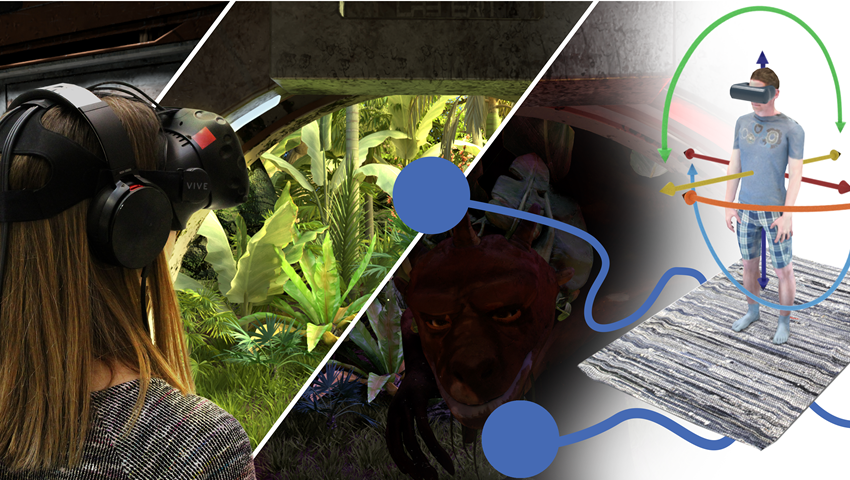The Immersive Pavillion is new this year at SIGGRAPH 2018 and will be a place to explore the latest technological advances in virtual, augmented, and mixed reality. Attendees can experience, play, and learn in the Pavilion’s VRcade, VR Theater (part of the Computer Animation Festival), or in the Virtual, Augmented & Mixed Reality space (formerly VR Village). We sat down with 2017 VR Village contributor Kenny Mitchell, one of the creators of Disney Research’s “IRIDiuM+: Deep-Media Storytelling With Non-Linear Light-Field Video,” to discuss the process behind the project, the future of VR, and why the SIGGRAPH conference is a great place to learn about and experience immersive storytelling.
What inspired IRIDiuM+?
For as long as I can remember I’ve been inspired by the aim of achieving realistic immersive experiences with computer graphics, from being inspired by the first 3D 8-bit video games, like 3D Monster Maze, to immersive theme park rides, like Avatar Flight of Passage at Pandora – The World of Avatar, Walt Disney World. New immersive video games and attractions have huge costs in producing the high-end artwork and imagery, and often when these are movie adaptions it involves basically re-implementing and revisiting content that already cost millions to make for the film release. So, IRIDiuM+, which re-uses movie content directly for VR and games, was inspired by how to make these stories come to life and be interactive in a way that is realistic, both in terms of movie-quality visuals, but also in terms of production cost.
How long did it take for IRIDiuM+ to go from an idea to actual development? What was the most challenging hurdle to overcome?
We essentially developed light-field techniques to automatically take movie renders into real-time and in 3D with full motion animated exploration, allowing interactive branching story lines (plus haptics and audio) for a full Deep Media experience. The IRIDiuM+ project took about 10 months from idea to implementation in the Experience Hall at SIGGRAPH 2017’s VR Village. It was challenging both from the technically new elements of non-linear light field video branching, but also because of the complex web of content and devices, and the multiple teams that had to come together in a short time frame.
What motivated you to pursue immersive storytelling in virtual reality (VR)?
With VR storytelling we have an all-encompassing space which makes it easier to take us outside of ourselves and help us to see things differently without mundane day-to-day constraints. I’m optimistic this can lead to new understanding and appreciation for the things that really matter in our lives. To some extent, we all live in our own reality distortion bubbles. Authored realities provide an easier way to share a common view of a story and feel more connected.
Do you see the role of VR changing in the future, compared to traditional media?
Immersive media will continue to evolve as better hardware and methods, like IRIDiuM+, are able to deliver content efficiently. As we reach more and more people with fantastic installations, devices, and storytelling in a way that can be viscerally experienced together, I think we should start to see important shifts in how people live and interact via media.
What technological developments do you anticipate will have the biggest effect on how we experience VR in the future?
I can see visual and audio advancements following a clear path to enrich VR in the future towards impressively realistic, indistinguishable, and seamless story worlds. It’s harder to see how physical immersion with realistic haptics can really be achieved, but this would surely lead to the biggest effect on us … with one advantage of VR over AR being that physical actuating devices can be more easily hidden from view.
The theme for SIGGRAPH 2018 is “generations,” and as a SIGGRAPH 2017 VR Village selection, your project is officially part of SIGGRAPH’s generations. Do you have any tips for those who might want to share their content with the conference in the future?
If you’re inspired to create computer graphics and interactive techniques that no-one else has seen before in new ways that make it easier and go farther, then you’ll find a lot of us at SIGGRAPH eagerly awaiting your submissions and excited to see what you bring.
SIGGRAPH 2018 takes place 12&ndah;16 August in Vancouver, British Columbia. Registration is open. For the best value, register before 22 June.



